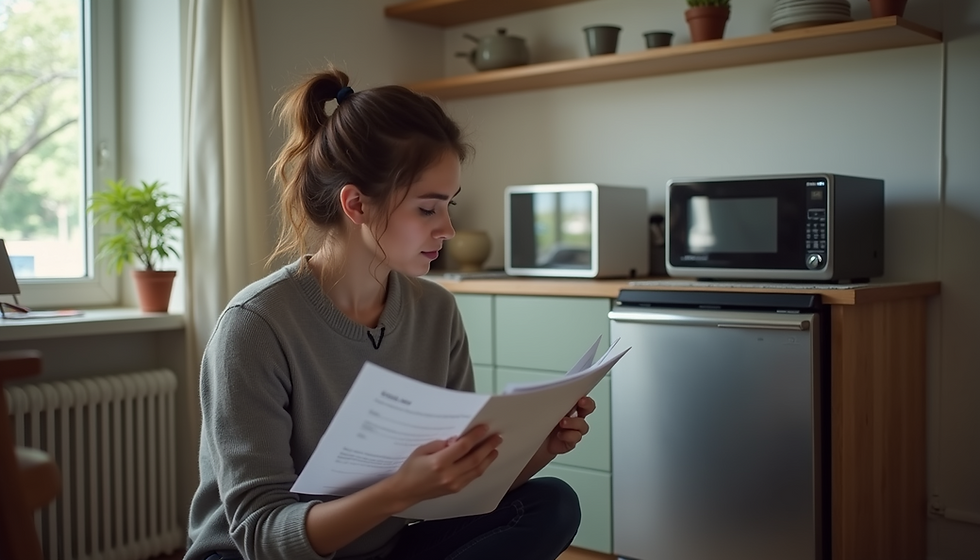Essential Guide to Sewer Camera Inspections for Homeowners and Business Owners
- Felicia Thoele
- Oct 17
- 4 min read
Updated: Oct 19
Sewer camera inspections are gaining popularity among homeowners and business owners. This innovative technology allows for a detailed look inside sewer lines without digging up your yard or parking lot. By using high-resolution cameras, professionals can find issues such as clogs, cracks, and tree roots invading pipes. This guide will explore the benefits of sewer camera inspections, how they work, and why they are vital for maintaining your property’s plumbing health.

What is a Sewer Camera Inspection?
A sewer camera inspection is a non-invasive way to diagnose problems in sewer lines. It involves inserting a waterproof camera on a flexible cable into the sewer system. As the camera moves through the pipes, it sends real-time video footage to the technician, making it easier to assess the condition of the plumbing.
This technology is especially helpful for homeowners dealing with frequent drain backups or bad smells. For business owners, regular inspections can be part of a preventive maintenance strategy to avoid costly repairs later on. In fact, around 25% of all plumbing repairs stem from undetected issues that could have been caught early with inspections.
Benefits of Sewer Camera Inspections
1. Accurate Diagnosis
One major benefit of sewer camera inspections is the precise diagnosis they offer. Traditional methods often involve guesswork, leading to extensive digging and repairs. A camera inspection helps professionals identify the exact location and type of problem. For instance, if tree roots are invading a pipe, they can determine how much of the line is affected without unnecessary excavation.
2. Cost-Effective Solutions
Catching plumbing problems early can save homeowners and business owners a substantial amount of money. Repairs for blocked sewer lines can range from $500 to $2,000 depending on the severity. In contrast, a sewer camera inspection usually costs between $100 and $300. By investing in this service, you can avoid expensive and invasive repairs if problems are detected sooner.
3. Comprehensive Documentation
A sewer camera inspection also generates high-quality footage that serves as visual documentation of the sewer line’s condition. This footage is a useful resource for future inspections or repairs. For homeowners, it can be an essential part of preparing a home for sale, providing interested buyers with reassurance about the plumbing condition.
When to Consider a Sewer Camera Inspection
Homeowners
Homeowners should think about scheduling a sewer camera inspection if they notice:
Frequent drain backups
Bad odors coming from pipelines
Slow drainage in sinks or toilets
Recent landscaping activity that might have affected the sewer line
By addressing these signs quickly, homeowners can prevent larger issues from developing, saving both time and money.
Business Owners
For businesses, particularly those that rely heavily on plumbing like restaurants and hotels, regular sewer camera inspections are crucial. For example, if a restaurant experiences repeated plumbing issues, it could lead to loss of business and damage to its reputation. By committing to regular inspections, businesses can ensure their plumbing is in good condition and avoid disruptions.
Choosing the Right Professionals for Sewer Camera Inspections
When selecting professionals for sewer camera inspections, keep these important factors in mind:
1. Experience and Qualifications
Choose professionals with a solid track record in sewer inspections. Confirm that they are licensed and insured. Experienced technicians know how to interpret the footage correctly and can provide reliable recommendations.
2. Technology Used
Ask about the equipment used during the inspection. High-resolution cameras and advanced software produce clearer images and more accurate assessments. Companies that invest in up-to-date technology are often more capable of delivering quality results.
The Process of a Sewer Camera Inspection
Step 1: Preparation
Before the inspection, technicians will evaluate the property and find the best access points for the camera. They may need to locate cleanouts or other entry points in the plumbing system.
Step 2: Inspection
Once access points are determined, the camera is inserted into the sewer line. The technician continuously monitors the live feed, watching for problems such as damage or blockages. Depending on the sewer line’s length and condition, the entire inspection typically takes about 30 to 90 minutes.
Step 3: Analysis and Reporting
After the inspection, technicians analyze the footage and prepare a detailed report of their findings. This report often includes repair recommendations and the recorded video footage as reference material.

Why Invest in Sewer Camera Inspections?
Sewer camera inspections are an invaluable resource for homeowners and business owners alike. Utilizing this advanced technology leads to accurate diagnoses, cost savings, and thorough documentation of plumbing conditions. Whether dealing with a pesky plumbing problem or simply ensuring your system is in good shape, a sewer camera inspection is a smart step toward maintaining your property's plumbing health.
Regular inspections can help you avoid plumbing emergencies in the future. By selecting qualified professionals and understanding the advantages of these inspections, you can maintain a functional and efficient plumbing system. Don't wait until a plumbing emergency strikes. Consider scheduling a sewer camera inspection today to protect your property’s plumbing health.




Comments